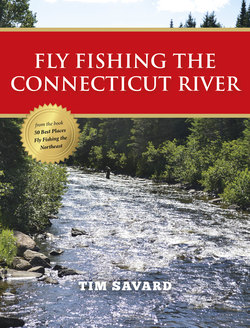Читать книгу Fly Fishing the Connecticut River - Tim Savard - Страница 3
Оглавление13 . Connecticut River
Location: Northern New Hampshire, about a 4½-hour ride from Boston or Portland, Maine, and a 3½-hour ride from Manchester, New Hampshire. Full-service airports are available in all three cities.
The headwaters of the Connecticut River begin in extreme northern New Hampshire at Fourth Connecticut Lake, in the town of Pittsburg, just a few hundred yards from the U.S.–Canadian border. From this tiny pond, at
2,660 feet elevation, the river begins its 407-mile journey to Long Island Sound. As the river flows south, it passes through a chain of deep, cold bodies of water known as the Connecticut Lakes. Dams below First Connecticut Lake and Lake Francis keep river temps cold right through the summer.
Indian Stream, a tributary to the Connecticut River below Lake Francis in Pittsburg, was once the site of the Republic of Indian Stream. This small community of just a few hundred citizens, with its own government and constitution, was extant in the early to mid-1830s. The existence of this independent republic was due to a border
dispute—or more accurately, a lack of clarity—between Canada and the United States. The republic ceased to operate in 1835, when it was occupied by the New Hampshire Militia. The area was first settled under a land grant from King Philip, or Metacom, son of the famous Wampanoag sachem Massasoit. This adds to its already colorful history.
The Upper Connecticut River has three very different sections of interest to anglers. From below Second Connecticut Lake dam to First Lake, the river is small. This 2½-mile stretch is roughly 15 to 20 feet wide, with average stream flows between 60 and 90 cfs. Home to wild landlocked salmon and brook trout, this freestone section features riffles, pools, and a unique pond area where Dry Brook enters the river. A recently opened
